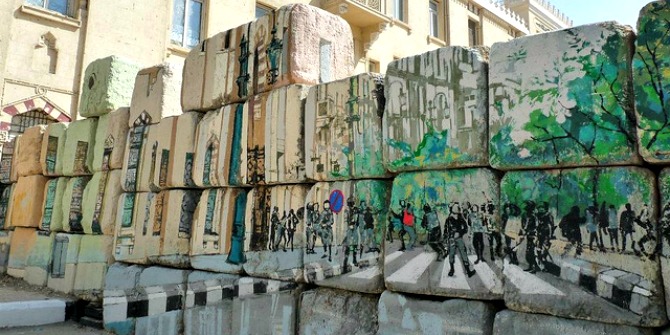In Craft and the Creative Economy, Susan Luckman looks at the rise of the craft entrepreneur and the growth of the handmade economy as an Internet-driven phenomenon. This is an appealing look at the renewed trend towards craft and making that gives valued attention to both the role of digital networks and the gendered and classed implications of this particular aspect of the contemporary creative industries, writes Paz Concha.
Craft and the Creative Economy. Susan Luckman. Palgrave. 2016.
 Susan Luckman’s book, Craft and the Creative Economy, revises the idea of craft as an object and a practice, looks at the take-off of craft entrepreneurialism and the role of the Internet as a tool for its distribution and marketing. The author is interested in analysing small-scale creative practices by looking at cultural workers and the gendered experience of cultural work. The book is ‘theoretically speculative’ (8), and most chapters debate ideas, concepts and literature on cultural studies and the creative industries, the impact of social media and the study of gender and technology. Luckman discusses how the craft or handmade economy has grown in the past year and the renewed value that craft items have for a middle-class audience, using a preliminary textual content examination of the website Etsy – a digital marketplace and community for selling crafts (knitting, crocheting and other handmade items) worldwide – as an example to support her argument.
Susan Luckman’s book, Craft and the Creative Economy, revises the idea of craft as an object and a practice, looks at the take-off of craft entrepreneurialism and the role of the Internet as a tool for its distribution and marketing. The author is interested in analysing small-scale creative practices by looking at cultural workers and the gendered experience of cultural work. The book is ‘theoretically speculative’ (8), and most chapters debate ideas, concepts and literature on cultural studies and the creative industries, the impact of social media and the study of gender and technology. Luckman discusses how the craft or handmade economy has grown in the past year and the renewed value that craft items have for a middle-class audience, using a preliminary textual content examination of the website Etsy – a digital marketplace and community for selling crafts (knitting, crocheting and other handmade items) worldwide – as an example to support her argument.
Craft and the Creative Economy brings together discussions about craft and making with sustainable production, ethical living, cultural industries and everyday life. The author mentions through the book how this analysis reveals a tension between critiques of how the values and discourses of global capitalism permeate our everyday lives and ‘the very real needs of human beings to get on with the business of life as best they can, often in surprisingly innovative ways’ (8). In this sense, it raises the idea of changing consumption and production practices in a globalised marketplace. The search for consumer distinction has enabled the rise of handmade products as unique, desirable objects and crafting as a profitable working practice, especially for entrepreneurial women who are using digital technologies to network and market their businesses.
The author raises several questions in the introduction, which are interestingly answered throughout the book: what are the drivers in the growth of the handmade or craft economy (Chapter One); how does this phenomenon sit in the context of creative economies (Chapter Two); and what does the growing consumption of crafted objects say about lifestyles and ethical consumption? (Chapter Three). Also, how gendered is this business? And how are issues like ethnicity and class related to craft entrepreneurship? (Chapters Five and Six).
 Image Credit: Paper Melaka Ferris Wheel (f3nd1 CC BY 2.0)
Image Credit: Paper Melaka Ferris Wheel (f3nd1 CC BY 2.0)
In Chapter One, the author defines craft and the factors behind the current expansion and resurgence of the craft movement. She looks at historical changes and the recent financial crisis, but also the transformation in consumption values: in this case, nostalgia and ethical and environmental friendly production and consumption are drivers for the renewed interest in craft and making. Other issues, like the growth of women in the workforce and female self-employment, are also discussed. Chapter Two is focused on placing the craft economy within the larger context of the creative industries. The author offers figures about the size, scale and demographics of makers; selling channels; and business development ideas among craft entrepreneurs.
However, the core and novelty of this book lies in Chapter Three, ‘Material Authenticity and the Renaissance of the Handmade: The Aura of the Analogue (or “The Enchantment of Making”)’, where the author theorises about the relationship between craft and the idea of ‘material authenticity’: here, she discusses the discourses that circulate around the craft economy and how these are related with the idea of ethical consumption. Luckman argues that ‘the handmade’ and craftsmanship have changed their meanings in current consumer culture, where craft items appeal to people for their uniqueness and for the close personal relationship that the consumer can establish with the maker. This desire for craft items depicts a change in middle-class consumption towards being more ethical and environmentally aware of the production process; the author connects this concern with the rise in the popularity of businesses like artisan food production, farmer’s markets and fair trade products. The author proposes that the ‘handmade cultural economy is operating in a so called ‘‘consumer citizenship’’’ (73), where people are searching for more sustainable or alternative lifestyles to mass consumption.
Following this discussion, the author reviews concepts such as ‘aura’ and ‘enchantment’ (drawing on the work of Walter Benjamin) to explain how the value of craft items relies in the practice of ‘making’ them: in this case, how making, or hand-making, is what gives value and uniqueness to products. In this sense, through making and obtaining handmade creations, consumers can develop a human relationship with the creator. For this reason, the seller or maker’s profiles and the story behind this is highly relevant for their craft business. The maker sells not only a product, but also a relationship with an object, a person and a story.
In Chapters Four and Five, the author discusses the wider changes in women’s home-working practices and how these craft entrepreneurs build their profile and businesses in a new context of domesticity and craft professionalism. In this discussion, what is remarkable is how the author compares earlier domestic craft practices of working-class women and the notion of ‘making do’ with a renovated middle-class ‘mumpreneuralism’ – or how mothers create craft businesses from their homes and connect with each other and their customers through online communities like Etsy.
Craft and the Creative Economy offers a fresh look at contemporary craft entrepreneurs and gives an overview of the main conceptual debates behind the raised profile of craft and making as a new production and consumption trend. It also gives emphasis to the gendered aspect of this kind of entrepreneurialism as well as the role that online communication networks play in this social phenomenon. This book is an appealing read for people interested in cultural economies and lifestyle consumption. Although it is not intended for a lay audience, it is amicable and enjoyable reading that also gives hints for further academic explorations.
Paz Concha is a PhD Candidate in the LSE Sociology Department. Her research explores the relationship between cultural economies and place making. Read more by Paz Concha.
Note: This review gives the views of the author, and not the position of the LSE Review of Books blog, or of the London School of Economics.







